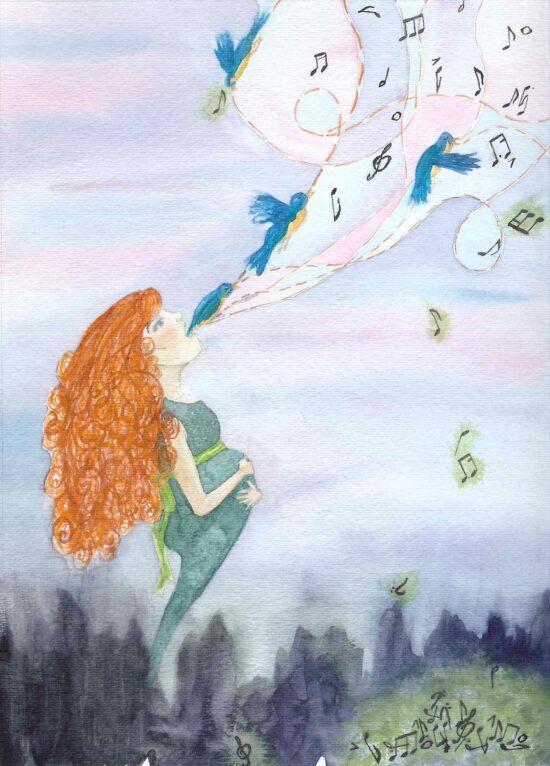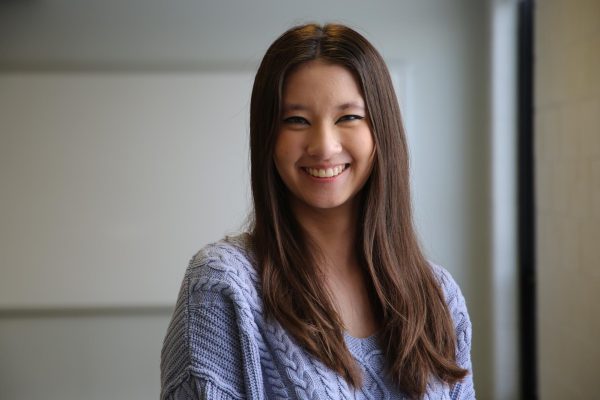St. Joe’s Counseling and Psychological Services (CAPS) sponsored “The Art of Recovery,” a traveling exhibition of artwork by individuals recovering from eating disorders.
The artwork was on display from 12-1 p.m. March 2 in the Post Learning Commons on the Hawk Hill campus, then from 12:30-1:30 p.m. March 3 in the Athletic/Recreation Center (ARC) Lobby on the University City campus.
The art is by individuals who are undergoing or have undergone treatment at the Renfrew Center, a national eating disorder treatment clinic with several locations in the Philadelphia area. Each piece of art depicts an aspect of the individual’s experience with an eating disorder.
Karen Levinson, Ph.D., associate director of CAPS-UC, started the event on the UCity campus over two decades ago. Levinson was the long-time director of counseling at Student Health and Counseling (SHAC) at the University of the Sciences. She continues to organize “The Art of Recovery” as part of Eating Disorders Awareness Week, which took place Feb. 27 to March 3.
Levinson called the exhibit “moving” and “provocative” and said she was glad that both campuses were involved this year in showcasing the artwork.
Jenna Bass received treatment at Renfrew as a young adult. Her art, which depicts her journey through her eating disorder, was featured in the exhibit. While she grew up making art, Bass said she stopped when she got sick with her eating disorder.
But at Renfrew, where art therapy is an integral part of the program, Bass said she discovered art again.
“It helped me immensely in my recovery,” Bass said.
Heidi Freeman, Ph.D., executive director of Health & Wellbeing for the Student Health Center, coordinated the event on the Hawk Hill campus. Freeman said she hopes the exhibit will help struggling students realize they have support.
“I think it’s great to know that you’re not alone and that there’s a community,” Freeman said. “There is hope. There is light at the end of the tunnel.”
Sondra Rosenberg, creative arts therapies supervisor for the Renfrew Center of Philadelphia, said art gives people, including those with trauma, a way to communicate their experiences with eating
disorders and recovery.
“It works very well for people with eating disorders because there’s already an inclination to show things in coded ways, to use food and their bodies to express things and to regulate their emotions,” Rosenberg said.
Rosenberg said various common motifs appear in artwork about eating disorders, one of these being an outstretched hand.
“It’s a frustrating, tantalizing experience, wanting something that you can’t get at,” Rosenberg said. “That same kind of dynamic happens in the recovery process.”
One of Bass’s watercolors in the show features a woman holding her stomach while blue jays and music notes emanate from her mouth.
“A big part of my concern back then was that if I actually dared to say what was going on and how I felt and all these deep dark truths, that they wouldn’t be heard or that the people around me [who] I was telling them to wouldn’t know to pay attention to them and value them for what they were worth,” Bass said.
The blue jays in her painting, Bass said, “are telling on her and singing the truth.”














































